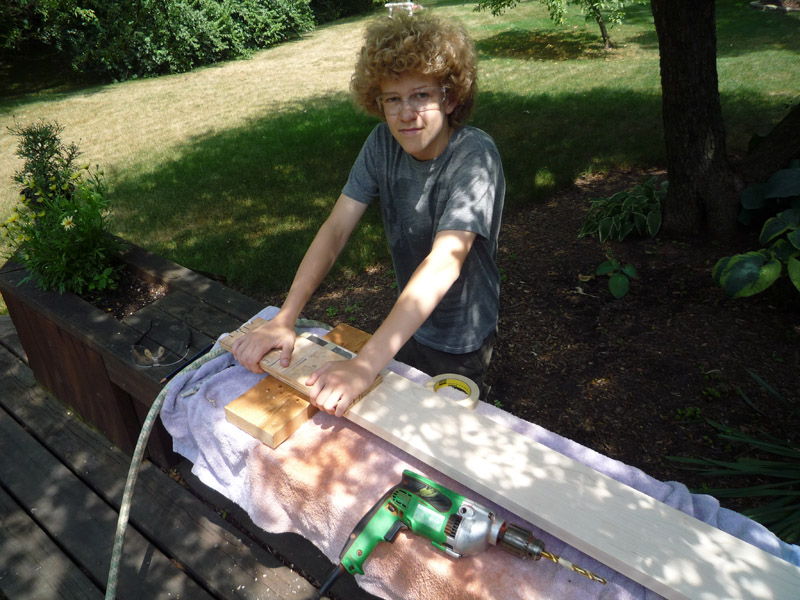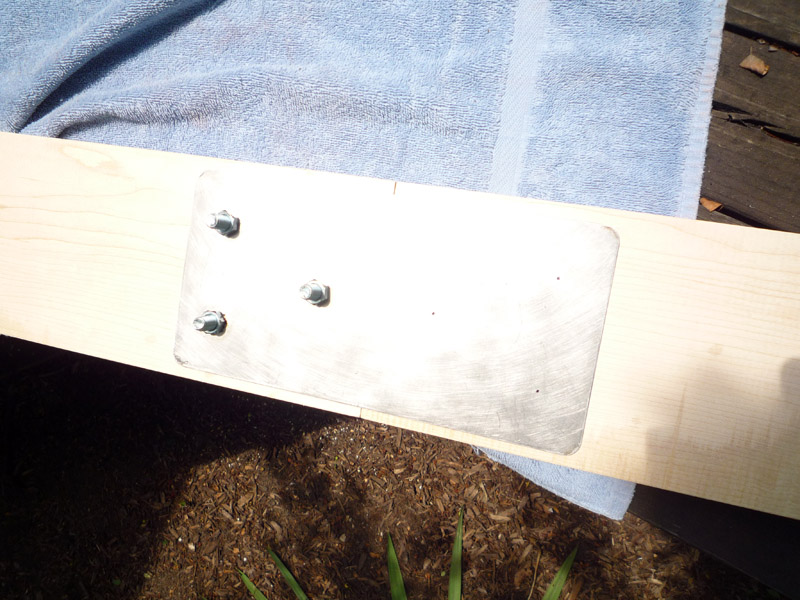Paul-
DON’T WORRY! It wasn’t actually near-death for dad or me. But for the marimba, it came close. Preparing to line up the new holes for replacement bars, we had a close encounter of the absent-minded kind. We had all the bars in place (or so we thought) and we began sliding a metal rod through the holes of the good bars in order to decide where to drill new holes in the replacements. But each time, the rod came out of the hole tilting the wrong direction. We tried again and again. Yet for every bar, it appeared the hole had been drilled at a reverse angle. A few minutes after this painful realization, we collapsed to regroup and think about solutions, thinking we had just ruined every bar on the entire instrument. Could we drill the other way? Change the post location between bars? All solutions seemed hopeless. Then dad asked a simple question, “Are these naturals or sharps?” At that point I realized the mistake. I had lined the naturals up as though they were sharps, causing the angling of the holes to seem backwards. A quick shift of position led us to the correct arrangement and a disastrous near-death experience was barely averted.
Now that we are confident that we still have bars that will function properly on the instrument, we have begun construction of the rails. These four long wooden pieces span the whole instrument and provide a base on which the bars rest. In order to construct them, we had started to drill holes in stainless steel plates to connect the two halves. We will then drill the same holes in the planks and put bolts through the wood to create eight-foot long rails on which to rest the bars. The pictures will help to explain.

Using the grinder on the stainless steel plates. The table saw is just providing a nice work surface, and is not plugged in







